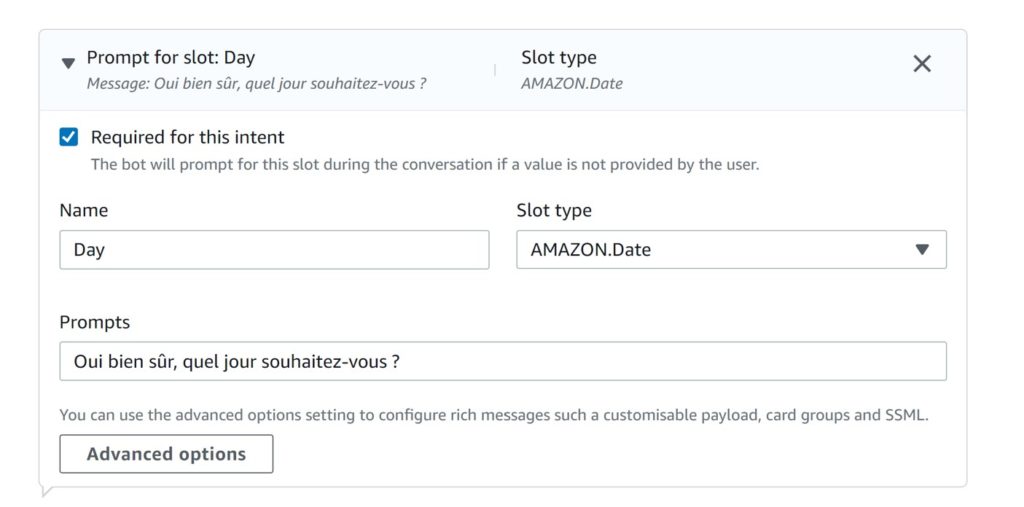Conversational bots are becoming increasingly popular in contact centers due to their ability to help customers quickly and efficiently. These virtual agents are able to complement the support of human agents to make them more efficient, improve the customer experience and reduce contact center operational costs. According to Gartner, by 2026, one in 10 agents interactions will be automated using a bot. In addition, bot deployments in contact centers will reduce agent labor costs by $80 billion [1]. In this expert opinion, we will try to demystify conversational bots, how they work, and their design tools.
IVR vs. conversational bot?
In a traditional contact center, an Interactive Voice Response (IVR) system is used. This is a sequence of menus and sub-menus that identify the intent of the call and route it to the right agent. Compared to an IVR, a conversational bot can directly assist users. The user can directly express his request and say “I want to make an appointment” or “I want to cancel my reservation” … the bot is able to understand this intention and route it to the right agent. If the customer’s request is simple, it can provide answers by itself. Compared to an IVR, interacting with a conversational bot is faster and more natural as customers are increasingly familiar with voice assistants such as Siri, Alexa and Google Assistant.
What are the applications and advantages of the conversational bot in a Customer Relations Center?
A conversational bot can automate the entire customer interaction with a contact center, or a part of it, and then transfer it to the right agent. This automation, whether partial or total, helps the agent to process the request, reduce the interaction time with the agent, and therefore achieve significant optimization. Many of the less value-added queries encountered in a contact center are redundant and repetitive and can be automated.
Note that at any point in the conversation with the bot, if the bot is unable to fully understand what the customer is saying, or if the customer requests an agent transfer, the bot is able to transfer the call immediately to the right agent. As a result, the agent can spend his interaction time with the customer on higher value-added tasks. The agent’s workload is therefore reduced and his interaction with the customer is faster and more fluid.
Technically, what is a conversational bot?
A conversational bot is a computer program that can converse with a user via text or voice messages, respectively called chatbot or voicebot. Technically, a voicebot is just a chatbot with a voice. The main steps of a bot in general are the following:
Conversational bots are built using “natural language processing” algorithms, which are part of artificial intelligence. Natural language processing is one of the most challenging problems in computer science; it requires Deep Learning algorithms that need large computations and huge volumes of training data. These algorithms transcribe (step 1), understand the words and the intended intent (step 2), and synthesize the voice from the text (step 4). Step 3 does not require NLP, but rather defining database queries to provide the necessary information. Then we build a personalized and dynamic response that corresponds to the identified intention.
However, several tools such as Amazon Lex and Google DialogFlow bring their natural language processing technologies to developers. These are the same natural language understanding engines used by their voice assistants, Alexa and Google Assistant. Tools such as AWS LEX and DialogFlow provide graphical interfaces where in a few minutes you can create and test a conversational bot without having any knowledge of natural language processing. All we need to do is define the set of intentions we are interested in and expect from users. In other words, we need to think of all the reasons why a user will call the contact center. For each reason, we then define the necessary queries and the bot’s response.
What does the design of a conversational bot look like?
Bot design tools provide natural language processing technology to allow us to focus on developing the scenario and defining the intentions. To create a bot, we simply specify the intentions we expect in the design console. Then, you can simply integrate the bot into the contact center flow. Typically, we define several independent or related intentions that correspond to several call reasons. For each intention, we need to:
You create a bot to handle one or more related intentions. For example, in a contact center for a medical laboratory, you can automate calls from customers who want to change their appointment and find out the opening hours. You can create a bot with two intentions “Modify Reservation” and “Opening hours”. For each intention, you must complete the 4 steps described above. We will go through them for the intention ” Modify Reservation “:
It is sufficient to give a few examples. It is not necessary to be exhaustive. When a customer says these phrases or another phrase that sounds like them, the bot should be able to understand that it is the “Change Booking” intent. Figure 1 shows the statements provided for this intent in the AWS LEX administration console.


Conclusion
Conversational bots allow to provide a natural, human-like, personalized and interactive support. They contribute to the rapid resolution of customer requests. They enable the creation of highly personalized and enriching customer experiences. Moreover, they lighten the workload of human agents and allow them to focus on more complex and higher value-added tasks. Many benefits that confirm the trend of human/machine cohabitation and confirm that the AI wave is affecting all businesses and processes. Taking advantage of it to better address the challenges of customer relations and providing a great customer experience are the major challenges of the relevant use of the bot in the customer journey.
Within the framework of a project, let’s not neglect the upstream phase which consists in defining the need, the expected uses, the context, the feasibility with the stakeholders. The recommended method BSINS – Best Service Is No Service – can facilitate the understanding of the need, the mapping of contact patterns to improve performance and rationalize incoming contacts without value. So don’t wait and contact our team to launch your project.
This article is brought to you by
Rita Ammanouil, Solution Architect, Activeo

